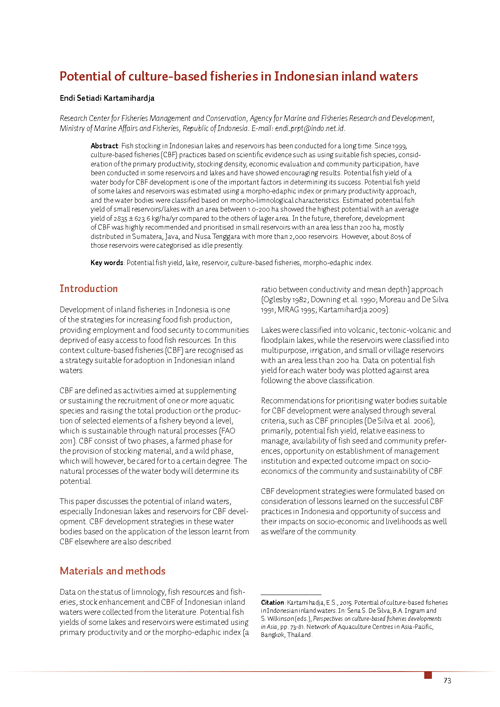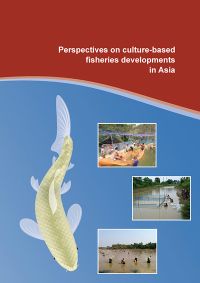Potential of culture-based fisheries in Indonesian inland waters
12 May 2015 | E.S. Kartamihardja | 939 Downloads | .pdf | 160.7 KB | Culture-based fisheries, Inland aquaculture, Indonesia
Fish stocking in Indonesian lakes and reservoirs has been conducted for a long time. Since 1999, culture-based fisheries (CBF) practices based on scientific evidence such as using suitable fish species, consideration of the primary productivity, stocking density, economic evaluation and community participation, have been conducted in some reservoirs and lakes and have showed encouraging results.
Potential fish yield of a water body for CBF development is one of the important factors in determining its success. Potential fish yield of some lakes and reservoirs was estimated using a morpho-edaphic index or primary productivity approach, and the water bodies were classified based on morpho-limnological characteristics. Estimated potential fish yield of small reservoirs/lakes with an area between 1.0-200 ha showed the highest potential with an average yield of 2835 ± 623.6 kg/ha/yr compared to the others of lager area.
In the future, therefore, development of CBF was highly recommended and prioritised in small reservoirs with an area less than 200 ha, mostly distributed in Sumatera, Java, and Nusa Tenggara with more than 2,000 reservoirs. However, about 80% of those reservoirs were categorised as idle presently.
Creative Commons Attribution.

